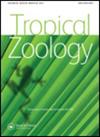对极度濒危的baewai鹿Axis kuhlii进行调查的相机陷阱的好处(Temminck, 1836)
IF 0.7
4区 生物学
Q4 ZOOLOGY
引用次数: 16
摘要
尽管是世界上最稀有的鹿之一,但极度濒危的ba断奶鹿Axis kuhlii却很少受到保护。动物监测通常因缺乏资源而受到限制;因此,选择相关的方法是实现成本效益比最大化的基础。比较了三种直接法和间接法在巴威岛保护区调查巴威鹿的性能和成本。相机诱捕提供了大量的baewai鹿记录(5500个相机天118只),并确定了其他几个物种的身份。随着旱季的到来,照片的数量也在增加。样条取样在现场耗时,结果很差(19.200小时两次记录)。粪便颗粒组计数更成功(9600小时现场工作80个颗粒组)。相机陷阱买起来很贵,但它们减轻了现场工作的负担,并为进一步分析提供了大量数据。本文章由计算机程序翻译,如有差异,请以英文原文为准。
Benefit of camera trapping for surveying the critically endangered Bawean deer Axis kuhlii (Temminck, 1836)
Despite being one of the rarest deer in the world, the critically endangered Bawean deer Axis kuhlii has received little conservation attention. Fauna monitoring is usually limited by lack of resource; therefore, the choice of a relevant methodology is fundamental to maximize the cost–benefit ratio. We compared the performance and cost of three direct and indirect methods to survey Bawean deer in protected areas of Bawean Island. Camera trapping provided a high number of records of Bawean deer (118 for 5500 camera days) and ascertained identifications of several other species. The number of photographs increased with the dry season. Transect sampling was time-consuming in the field for a poor result (two records for 19.200 h). Faecal pellet group count was more successful (80 pellet groups for 9.600 h of fieldwork). Camera traps are expensive to buy, but they lighten the field work and provide much data for further analyses.
求助全文
通过发布文献求助,成功后即可免费获取论文全文。
去求助
来源期刊

Tropical Zoology
生物-动物学
CiteScore
2.50
自引率
0.00%
发文量
1
审稿时长
>12 weeks
期刊介绍:
Tropical Zoology is an international zoological journal publishing original papers in the field of systematics, biogeography, phylogeny, ecology and conservation of all terrestrial and aquatic animal Phyla from tropical and subtropical areas.
Only papers with new information, high quality and broad interest are considered. Single species description and checklists are not normally accepted. Review papers are welcome. The journal is owned by the Istituto di Ricerca sugli Ecosistemi Terrestri of the Consiglio Nazionale delle Ricerche, Florence, Italy (CNR-IRET) who performs research into the structure and functioning of aquatic and terrestrial ecosystems, focusing in particular on anthropogenic pressure and global change. The knowledge amassed forms the scientific basis for identifying the most appropriate protective and corrective interventions, and provides support for the bodies entrusted with formulating policies for environmental protection and recovery.
 求助内容:
求助内容: 应助结果提醒方式:
应助结果提醒方式:


